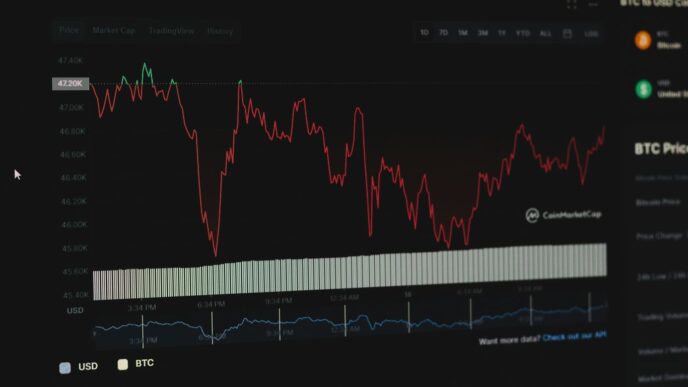In the ever-evolving world of digital design, user experience (UX) and user interface (UI) play a defining role in shaping how users interact with brands online. As technology, consumer expectations, and design trends evolve, businesses often find that their websites or apps—once cutting-edge—are now outdated, cluttered, or difficult to use. This is where UX/UI redesign services come into play.
A professional UX/UI redesign service focuses on reimagining and enhancing the usability, aesthetics, and overall digital experience of an existing product. Whether it’s a website, mobile app, or SaaS platform, a thoughtful redesign helps businesses attract, engage, and retain users more effectively. Let’s explore the art and science behind UX/UI redesign, why it matters, and how partnering with an expert design team can breathe new life into your digital presence.
1. Understanding UX/UI Redesign Services
UX/UI redesign services involve the comprehensive evaluation and re-creation of a product’s user interface and user experience. It’s not just about updating visuals—it’s about strategically improving how users interact with your digital product.
UX (User Experience) redesign focuses on functionality, flow, and usability. It ensures that users can easily achieve their goals without confusion or frustration.
UI (User Interface) redesign centers on the visual and interactive elements—colors, typography, buttons, icons, and overall aesthetics—that make the product appealing and intuitive.
Together, UX and UI redesign create a seamless, beautiful, and efficient digital experience that aligns with user expectations and business objectives.
2. Why Redesign Your UX/UI?
Businesses often reach a point where their digital platforms no longer meet modern standards. Here are the most common reasons to invest in UX/UI redesign services:
a. Outdated Design
Design trends evolve rapidly. What looked sleek five years ago may now appear dated or cluttered. Users associate visual appeal with credibility—so outdated designs can make your brand seem out of touch.
b. Poor User Engagement
High bounce rates, short session durations, or low conversion rates often point to usability issues. Redesigning the UX/UI helps eliminate friction points and encourages users to stay longer and convert more often.
c. Mobile Responsiveness Issues
With most web traffic coming from mobile devices, an outdated or poorly responsive design can alienate a large portion of your audience. A redesign ensures full compatibility across devices and screen sizes.
d. Rebranding or Business Growth
If your company undergoes a rebrand, merges, or expands, your digital products must reflect this evolution. A redesign allows you to update visuals, tone, and content in alignment with your new brand identity.
e. Technological Advancements
New technologies such as AI integration, chatbots, and dynamic interfaces can significantly enhance user experiences. Redesigning your UI/UX allows you to integrate modern features and capabilities.
f. Competitive Pressure
In a crowded digital landscape, superior user experience is a competitive advantage. If your competitors offer smoother, faster, or more visually appealing experiences, you risk losing customers—making redesign a necessity.
3. The Core Elements of UX/UI Redesign Services
A professional UX/UI redesign service covers every aspect of user interaction, ensuring that both functionality and form work harmoniously.
a. UX Audit and Research
The process begins with an in-depth UX audit, which identifies weaknesses in the existing design. This includes studying analytics, heatmaps, user behavior, and conversion data. The team also conducts user research, surveys, and interviews to understand what users find frustrating or confusing.
b. Information Architecture (IA)
After research, designers restructure how information is organized and presented. Clear navigation, logical categorization, and intuitive flow make it easier for users to find what they need.
c. Wireframing and Prototyping
Wireframes serve as blueprints for the redesigned interface. Prototypes, on the other hand, allow stakeholders and users to interact with a working model before final development begins.
d. Visual Design
This stage focuses on crafting a modern, appealing, and consistent interface. It includes choosing a color palette, typography, iconography, and visual hierarchy that reflect your brand identity.
e. Interaction Design
Motion effects, transitions, and micro-interactions—like hover effects or button animations—add depth and delight to the user experience.
f. Usability Testing
Before launch, the redesign is tested with real users. This step identifies potential usability issues and ensures that the final design performs flawlessly under real-world conditions.
4. The Benefits of Professional UX/UI Redesign Services
A well-executed redesign delivers tangible improvements across multiple areas:
a. Enhanced User Satisfaction
A cleaner, faster, and more intuitive design dramatically improves user satisfaction. When users enjoy the experience, they stay longer, explore more, and are more likely to convert.
b. Increased Conversion Rates
By simplifying user journeys, optimizing call-to-action placements, and reducing friction, redesigns often result in measurable growth in conversions—whether it’s purchases, signups, or inquiries.
c. Improved Brand Perception
A modern interface communicates professionalism and innovation. It tells users your brand values quality and user-centricity.
d. Better Accessibility
Accessibility is crucial in inclusive design. A redesign ensures that your product meets accessibility standards (such as WCAG), allowing all users—including those with disabilities—to interact with your platform.
e. Higher Retention and Loyalty
A frictionless experience keeps users coming back. When customers find your product easy and enjoyable to use, they become loyal advocates.
f. Optimized for Mobile and Performance
Modern UX/UI redesigns focus on responsiveness and loading speed—factors that directly affect both user experience and search engine rankings.
5. The UX/UI Redesign Process Explained
To understand what happens during a redesign, let’s explore the typical process followed by a UX/UI redesign service provider:
Step 1: Discovery and Strategy
This phase involves stakeholder interviews, competitive analysis, and defining project goals. Designers seek to understand your business objectives, user pain points, and success metrics.
Step 2: User Research and Analysis
Surveys, interviews, and data analysis reveal user behavior patterns. Personas are created to represent different user types, helping guide design decisions.
Step 3: UX Audit and Benchmarking
Existing product performance is evaluated through analytics and usability testing. Benchmarks are set for post-redesign comparisons.
Step 4: Wireframing and IA Design
Wireframes illustrate page layouts, navigation flow, and interaction points. These help visualize how information will be structured before final visuals are added.
Step 5: UI Design and Branding
Once the wireframes are approved, the design team creates the final interface—color schemes, typography, imagery, and design elements that align with your branding.
Step 6: Prototyping and Testing
Interactive prototypes are shared for feedback. Usability testing is performed with real users to identify improvements before final development.
Step 7: Development and Launch
The approved designs are handed over to developers. Close collaboration ensures that the design vision translates accurately into code.
Step 8: Post-Launch Evaluation
After launch, performance metrics are tracked to assess success. User feedback helps fine-tune the design further.
6. Common Mistakes in UX/UI Redesign (and How to Avoid Them)
Even with the best intentions, redesigns can fail if not handled correctly. Here are some pitfalls to watch out for:
Ignoring User Feedback: Redesigning purely based on aesthetics without understanding user pain points leads to wasted effort.
Overcomplicating the Interface: Adding too many features or visuals can confuse users. Simplicity often wins.
Lack of Testing: Skipping usability testing may result in unanticipated usability issues post-launch.
Neglecting Mobile Users: Prioritizing desktop design at the expense of mobile users is a critical error.
Disregarding Brand Consistency: A redesign should enhance—not alienate—your existing audience. Ensure your new visuals still feel authentic to your brand.
7. How to Choose the Right UX/UI Redesign Partner
Selecting the right agency or team is key to a successful redesign. Look for these traits in a UX/UI redesign service provider:
Proven Experience: Review their past projects and case studies.
User-Centric Approach: Ensure they prioritize user needs over subjective design preferences.
Cross-Disciplinary Expertise: A good redesign agency combines design, research, strategy, and technical development.
Transparent Communication: Clear collaboration and regular updates are essential throughout the project.
Post-Launch Support: The best agencies provide ongoing maintenance and optimization after launch.
8. Real-World Impact: Examples of Successful UX/UI Redesigns
Airbnb:
Airbnb’s redesign focused on simplifying the booking process, enhancing visual storytelling through photography, and improving trust elements like reviews. The result? Increased engagement and conversions.
Spotify:
Spotify redesigned its app interface to highlight personalized playlists and simplify navigation, leading to higher retention and more listening time per user.
Slack:
Slack streamlined its workspace navigation and introduced better organization options—boosting productivity and reducing user friction.These examples showcase how UX/UI redesign services can transform user behavior and drive business growth.
9. The Future of UX/UI Redesign Services
As digital technologies advance, redesign services are evolving, too. Future trends shaping this field include:
AI-Driven Personalization: Adaptive interfaces that adjust based on user behavior.
Voice and Gesture Interfaces: Moving beyond clicks and taps to more natural interactions.
Augmented Reality (AR) Interfaces: Enhancing product visualization for e-commerce and training.
Sustainability in Design: Creating digital experiences that promote eco-conscious choices and energy-efficient coding.
The next generation of redesigns will be smarter, more immersive, and more emotionally connected to users.
10. Conclusion: Redefine Your Digital Experience with UX/UI Redesign Services
In today’s fast-paced digital world, first impressions happen in seconds—and your design is often the deciding factor. A professional UX/UI redesign service helps you modernize your digital product, elevate user satisfaction, and strengthen your brand’s position in the market.
It’s not just about making things look better—it’s about making them work better. From improving accessibility and engagement to optimizing performance and conversions, a redesign can completely transform how users perceive and interact with your brand.
Whether you’re revamping a website, refreshing an app, or aligning your digital presence with your evolving brand, investing in expert UX/UI redesign services ensures your business stays relevant, competitive, and user-focused in the digital era.














